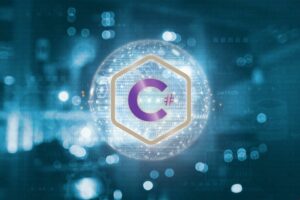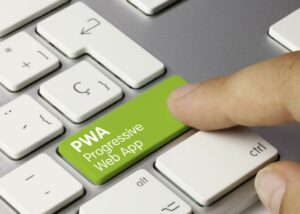Content
Scrumban can use the Scrum’s system of having daily meetings called stand-ups, whether it is a software development team or any other kind of work team. What Scrumban does take from Scrum is iteration planning and sprints. Now, the time-box constraints in Scrumban are not as strict as they are with regular Scrum. Still Scrumban benefits from this time-planning organizational structure of Scrum to help produce iterations in short bursts of work without being locked into long-term planning. The size of the iteration is measured in weeks, with the ideal size of an iteration depending on the work process of your team.

Scrumban establishes WIP limits at every stage of the workflow, which allows the team to identify bottlenecks. The kanban pull system means only producing enough capacity as the next step in the process can handle. So at a coffee shop, the cashier only takes orders as the barista is able to make coffees. This keeps bottlenecks from occurring in the workflow, and allows everyone to work at a steady pace. Once they reach a certain number then everything else needs to stop. The cashier stops taking orders, and the team focuses on pushing the coffees through the workflow.
During sprint meetings, team members focus only on the agreed tasks. There is a daily check-up on what tasks get accomplished during the day. Teams using the scrumban approach usually undertake strategic tasks and improve their processes simultaneously.
The crucial difference in running a Scrum and Kanban board…
If this bottleneck becomes chronic, then the owner purchases a second espresso machine to fix it. Ladas sought to remedy what he saw as errors in the scrum framework, in part by combining it with the kanban workflow system, which is closely related to the theory of constraints. With LogRocket, you can understand the scope of the issues affecting your product and prioritize the changes that need to be made.

The next element of a Scrumban board is the on-demand planning element. Demand planning simply refers to a planning meeting that occurs every time the number of tasks to be done gets below a certain number. The Scrumban process overview takes the most agile elements from both Kanban and Scrum. Kanban is more flexible and applied in many kinds of projects. You can read all about the differences in methodology and application in our Scrum vs Kanban comparison. The Scrumban definition usually begins by stating that it is a portmanteau of Scrum and Kanban.
Bucket-size planning
If implementing Scrumban isn’t familiar territory or you’re not sure how to put it to work, then you’ve landed in the right place. We’ve developed this beginner’s guide to Scrumban methodology to help you get up to speed what is scrumban on what Scrumban is, its many benefits, how to put it into practice, and ultimately measure success. Start a free trial, set up a Scrumban board and watch your process evolve towards the better and better still.
- Kanban Boards Instantly view project progress and create customized workflows.
- Even if the team marks work in progress, it must be time-bound because the scrum relies on this idea.
- Scrum doesn’t inherently require a visual aid for organizing work.
- Educational Guides Guides and tools to unlock better work management.
Workflow Management Use custom statuses and automate your team workflows. Kanban, which is extremely flexible and can fit in any existing setup, Scrumban is very easy to adopt. This reduces the pressure on the team members and allows them to work on their terms which can boost their performance. Scrumban, however, removes all the roles completely and gives equal roles to every member. Used for the company’s long-term goals that require more time and effort or have some sorts of pre-requisites.
Scrum and Scrumban are both time-based with recurring intervals of scheduled work. Scrum is usually divided into 1-4-week sprints with clear sprint goals, whereas Scrumban is more fluid and focuses on continuous work with 1-year, 6-month, and 3-month buckets. The scrumban combines the principles of “scrum” and “kanban.” We will profit from scrum’s backlogs, roles, pillars, and kanban’s strong pull flow concept. Scrum is frequently the best choice for projects that must build and deliver actual items on a regular basis. Scrum may be a good framework for you if you have a client that needs to see development every few weeks. Kanban is usually the best solution for projects that provide a service or have priorities that change frequently.
Limiting WIP
At some point you can slough off the cocoon and allow the pull system to spread its wings and take flight. When a company wants to give its team more flexibility in how it works. For example, the company doesn’t have enough resources to support a Scrum environment, or the team finds Scrum’s requirements too rigid. To understand how Scrumban merges Scrum and Kanban, we first need to understand each of these frameworks.

However, others have struggled with scrum’s system for assigning and organizing work. In scrum, just one person, the product owner, prioritizes and selects work for the team. At the beginning of a sprint, from among all the work https://globalcloudteam.com/ in the product backlog, the product owner identifies those tasks that will add the most value to the project goal. Although this is a collaborative effort, scrum assigns accountability and decision making to the product owner.
Scrumban does not have a hierarchy or defined roles (e.g., product owner, scrum master, etc.). For this reason, if the company does not have enough resources to implement the scrum methodology, scrumban could be a good alternative approach. But this work is not done until the necessary analysis is completed, which falls under the scrum definition of ready.
You can choose Kanban if your team doesn’t have any strict deadlines and features can be released when they are ready. Kanban is better for tasks that can be completed without dependencies on other tasks. You can use this method when the speed to market is the number one priority.
It fosters transparency and helps keep everyone on the same page. A product backlog is an extensive list of all the items that need to be completed to create the final product. The guide below offers a much more detailed overview of Kanban for those searching to expand their knowledge and understanding of this popular approach to project management.
Prioritize board items
On those boards, it’s possible to track the progress of work related to a specific story or a specific sprint, regardless of the team working continuously. Teams that initially adopted scrumban wanted to stop executing their work in agile sprints, and are naturally attracted to scrum boards because of their pull-based system. By extracting the best of both agile methodologies, scrumban teams are more flexible in their ability to adapt to changes as they arise. Execute scrumban to perfection with ProjectManager’s work management software.

New requirements, however, can still be added later, as this is an agile approach after all. These are primarily the freedom from the strict time-boxed iterations and sprint planning of Scrum with the flexibility of the pull system from Kanban. Around the same time, the Certified Scrumban Practitioner came out, a guide that defines Scrumban elements like the rules and roles of Scrumban.
Visualize your workflow and manage your work in an Easy and Intuitive way. Using this visualization, along with WIP Limits and implementing pull at the story level will get you started with applying Kanban within your Scrum environment. Kanban capability to address this process and feed the dev team is addressed in the body of work that is now termed Upstream Kanban or Discovery Kanban. As Scrumban inherited a large portion of its identity from Kanban, it should be no surprise that it’s equally easy to adopt. Due to its tendency to strive towards Lean, Scrumban allows for work and planning to be done in a minimalistic fashion — only when necessary and for no longer than necessary.
Set daily meetings
In Kanban, the additional metric is throughput, which measures the amount of work released over a specific timeframe. Both methods are relatively easy to adopt, however, Scrumban is usually recommended for teams in larger organizations and those that are just starting out with Agile. The Kanban method, on the other hand, would not work well in bigger organizations with cross-team collaboration as it’s not very clearly defined.
How Does Scrumban Combine Scrum and Kanban?
The iteration backlog, otherwise known as a “to do” column, is usually the first column on the board. Example of a Kanban board in PlakyTo avoid bottlenecks, Kanban boards often have multiple buffer columns. They function sort of like “parking lots” for the cards that have been finished by one team and are waiting to be picked up by another. There are no sprint goals that may sometimes frustrate the team if the goals are not achieved. The work is done on a continuous basis with ongoing improvements, even if the requirements change in the meantime.
And our team section gives project managers a place to collect team member skills to facilitate assembling effective teams. Nonetheless, it is not difficult to augment Scrum with a few simple practices that move us towards a more recognizably Lean workflow. The most obvious is the reduction of iteration length, although this is not without problems. As we will see, it is possible to incrementally enhance Scrum with more and more pull-like features until all that remains of the original process is vestigial scaffolding. The simple approach is to start with Scrum-like iterations and iteration planning process, and begin to add pull features to the team’s internal process.
Seven things you shouldn’t miss during your PI Planning Meeting
A problem with the basic index-card task board is that there is nothing to prevent you from accumulating a big pile of work in process. Time-boxing, by its nature, sets a bound on how much WIP that can be, but it can still allow much more than would be desirable. If a kanban is a token that represents a work request, and our task board can still get out of control, then what is the problem here? The problem is that a kanban is more than just a work request on a card, and putting sticky notes on a whiteboard is not enough to implement a pull system.


